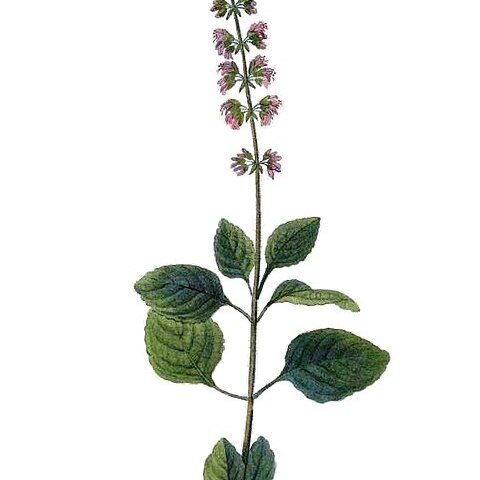A trailing herb. It can grow each year from seeds or last a few years. It grows 1 m long. The stems are pale green and 4 angled. The leaves are opposite and oval. They are 5 cm long by 3.5 cm wide. The tip is pointed and they are smooth around the edge. They narrow to the base. The leaf stalk is 2 cm long. The leaves are pale grey-green underneath. The flowers are small. They are along a narrow flower head at the top of the plant. The fruit are 4 oval nutlets.
A branched slender herb up to about 2 ft. high
Slender racemes of very small flowers
Corolla white, spotted with mauve

